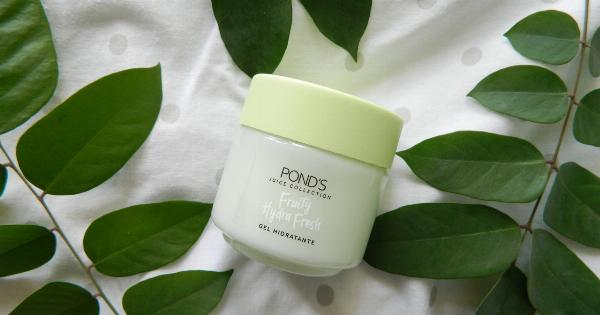Having flawless skin is important for both your personal confidence and your professional appearance. One effective way to achieve perfect skin is through clay exfoliation.
Clay exfoliation offers a plethora of benefits that can help you maintain healthy, glowing skin for your career. In this article, we will explore the advantages of clay exfoliation and guide you through the steps to incorporate it into your skincare routine.
Understanding Clay Exfoliation
Clay exfoliation is a natural skincare technique that involves the use of clay-based products to remove dead skin cells, unclog pores, and detoxify the skin.
This process provides a deep cleanse, resulting in a rejuvenated appearance and improved texture. The unique properties of clay make it an excellent choice for exfoliation due to its ability to absorb impurities and excess oil from the skin.
The Benefits of Clay Exfoliation
1. Unclogs Pores: One of the greatest benefits of clay exfoliation is its ability to unclog pores. By removing dirt, dead skin cells, and other impurities, clay helps prevent breakouts and reduces the appearance of blackheads and whiteheads.
2. Controls Excess Oil: Excessive oil production can lead to a shiny complexion and make your skin look greasy. Clay exfoliation helps regulate oil production, providing you with a more balanced and matte appearance.
3. Improves Skin Texture: Regular use of clay exfoliants can significantly improve the texture of your skin. The removal of dead skin cells promotes cell turnover, resulting in smoother, softer, and more vibrant skin.
4. Reduces Acne: Acne-prone skin can greatly benefit from clay exfoliation. The deep cleansing properties of clay can clear pores, reduce inflammation, and prevent the formation of acne-causing bacteria.
5. Brightens Complexion: Clay exfoliation enhances your skin’s radiance by eliminating dullness and leaving you with a bright and glowing complexion.
6. Evens Skin Tone: Clay exfoliants can help reduce the appearance of hyperpigmentation and uneven skin tone, giving you a more uniform complexion.
7. Tightens Pores: Over time, clay exfoliation can tighten the appearance of enlarged pores, creating a smoother and more refined complexion.
8. Fights Aging Signs: Clay contains properties that stimulate collagen production, making it an excellent ingredient for combating the signs of aging. Regular use can minimize fine lines, wrinkles, and sagging skin.
9. Nourishes and Hydrates: Although clay exfoliation has a deep-cleansing effect, it also nourishes and hydrates the skin, keeping it balanced and preventing dryness.
10. Enhances Absorption of Skincare Products: By exfoliating regularly with clay, you create a clean canvas for your other skincare products, allowing them to penetrate deeper into the skin and maximizing their effectiveness.
How to Incorporate Clay Exfoliation into Your Skincare Routine
Now that you understand the benefits of clay exfoliation, it’s time to incorporate it into your daily skincare routine. Follow these steps to achieve perfect skin:.
Step 1: Choose the Right Clay
There are several types of clay available, each with its own unique properties. The most common ones used for exfoliation purposes are:.
– Kaolin Clay: Suitable for all skin types, it gently exfoliates and detoxifies the skin.
– Bentonite Clay: Ideal for oily and acne-prone skin, it deeply cleanses and unclogs pores.
– French Green Clay: Great for combination and oily skin, it absorbs excess oil and tightens pores.
– Rhassoul Clay: Suitable for most skin types, it exfoliates, cleanses, and softens the skin.
Choose the clay that best suits your skin type and concerns.
Step 2: Prepare the Clay Exfoliant
Follow the instructions on the packaging to prepare your clay exfoliant. Generally, you will need to mix the clay with water or a liquid of your choice until you achieve a smooth paste-like consistency.
Avoid using metal utensils, as they can react with the clay.
Step 3: Cleanse Your Face
Before applying the clay exfoliant, cleanse your face with a gentle cleanser to remove any makeup, dirt, or oil. Pat your skin dry with a clean towel.
Step 4: Apply the Clay Exfoliant
Using clean fingertips or a soft brush, apply an even layer of the clay exfoliant to your face, avoiding the delicate eye area. Ensure you cover your entire face, focusing on areas prone to congestion or uneven texture.
Step 5: Relax and Wait
Allow the clay exfoliant to dry on your skin for the recommended duration specified on the packaging. This is typically around 10-15 minutes. Take this time to relax and enjoy some self-care.
Step 6: Rinse Off the Exfoliant
Once the clay exfoliant is completely dry, gently rinse it off with lukewarm water. Ensure you remove all traces of the clay and pat your skin dry with a clean towel.
Step 7: Moisturize and Protect
After exfoliation, it’s essential to moisturize your skin to restore hydration. Choose a moisturizer suitable for your skin type and apply it generously.
Additionally, don’t forget to apply a broad-spectrum sunscreen with at least SPF 30 to protect your newly exfoliated skin from harmful UV rays.
How Often Should You Exfoliate with Clay?
The frequency of clay exfoliation depends on your skin type. Generally, it is recommended to exfoliate with clay 1-2 times a week. However, if you have sensitive skin, limit exfoliation to once a week to avoid irritation.
A Word of Caution
While clay exfoliation offers numerous benefits, it may not be suitable for everyone. If you have extremely dry or sensitive skin, it’s advisable to consult a dermatologist before incorporating clay exfoliation into your routine.
They can guide you on the best approach and recommend suitable products.



























